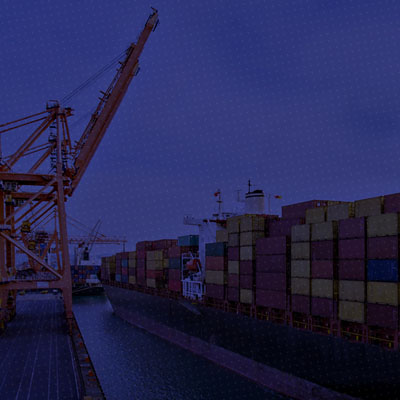With export promotion schemes like Export Oriented Units (‘EOU’), Special Economic Zones (‘SEZ’) and Export Promotion Capital Goods (‘EPCG’) being held by a Panel of the WTO to be inconsistent with the Agreement on Subsidies and Countervailing Measures, the thrust of Government of India has now shifted to age old scheme of duty deferment and manufacturing in customs bonded warehouse which was always available under the Customs Act, 1962 and erstwhile Sea Customs Act, 1878. Since last year, Central Board of Indirect Taxes and Customs (‘CBIC’) has been issuing new regulations, circulars and FAQ’s to bring more clarity under the said schemes. Apart from export-oriented units, the scheme is also being pushed for units having domestic sales but with the use of imported raw material or plant and machinery. This article is intended to make a case for shifting to such scheme.
Easy conversion:
- The existing factory / unit of the applicant can be converted into a custom bonded warehouse along with in-bond manufacturing permission vide a single application to be made to the jurisdictional Customs authorities.
- There is no criteria of minimum investment or minimum floor area for conversion into such scheme.
Less administrative burden:
- Unlike EOU and SEZ schemes, the administrative burden of getting Letter of Approval, Green card, commencement certificate, etc., are not required in the warehousing scheme.
- There are no pre-approved import and export items unlike other FTP/SEZ schemes. Any item of import and export can be added suo moto by the unit at a later stage (however input-output has to be informed to Customs for new finished goods).
- The licence for bonded warehouse as well as the permission to manufacture are valid until surrendered or cancelled. There is no requirement of renewal of licence/permission.
- Though there is a requirement to maintain records as specified in Circular No. 34/2019-Cus., dated 1 October 2019, however, there is ease of business since no periodical returns are required to be filed with the department.
No export obligation or NFE obligation:
- No specified export sales are required to be achieved under this scheme. There is no requirement to achieve positive foreign exchange. Thus, it is not restricted to export-oriented units only. The said scheme can also be availed by units having domestic sales as major proportion of turnover. If such domestic units want to use imported capital goods but make only domestic sales, the import duties on such capital goods are deferred till the date of clearance from warehouse. However, a note of caution: there is no depreciation available on capital goods when a unit de-bonds from the scheme. Hence, the capital goods are to be used in the warehouse till destruction or export the same after use to get remission from payment of duty, otherwise there can be full duty liability if cleared into Domestic Tariff Area (‘DTA’) at a later stage.
- A warehousing unit can make DTA sales at any point of time using the imported inputs, unlike advance authorization scheme wherein DTA sales can be undertaken only after completion of specified export obligation. The import duties on such imported inputs used in the manufactured resultant product are deferred till the date of clearance from warehouse. Further, no interest liability arises when the duties are paid at the time of home clearance / ex-bonding of the capital goods or raw materials incorporated in the resultant products.
Solves problem of credit accumulation:
- Recently, all companies that had availed advance authorization or EOU scheme are facing enquiries from Customs and GST authorities regarding violation of Rule 96(10) of the Central Goods and Services Tax Rules, 2017. The said rule bars claiming refund of IGST paid on export goods if inputs or capital goods, as the case may be, are imported without payment of GST. This rule is to prevent companies from liquidating accumulated credit pertaining to domestic purchases from same or other business activity of the said company. It is pertinent to note that export of finished goods which are manufactured in custom bonded warehouse from the use of imported inputs or capital goods are not restricted under Rule 96(10) from claiming refund of IGST paid on such exports. Hence, converting into this scheme can also resolve the issue of credit accumulation faced by many units currently under FTP/SEZ schemes.
- Given the history of Rule 96(10), government should clarify that Rule 96(10) would not apply to operations in a bonded warehouse.
Job work allowed (to and from):
- Recently, Circular No. 48/2020-Cus., dated 27 October 2020 has been issued by CBIC to clarify that such units are allowed to perform job work for DTA units. This enables capacity utilization. Such facility is not available to SEZ or EOU unit wherein it is provided that SEZ/EOU can undertake job work only for DTA unit who wants to export goods and not for DTA unit who wants to do domestic sales.
- It is also clarified that such units under warehousing scheme can send inputs to DTA units and carry out job work from them (for export sales as well as DTA sales).
The fear of customs control has been keeping many units away from bonded warehousing scheme. However, recent relaxations and clarity, would surely go a long way in creating alternatives to FTP/SEZ schemes. Still, there is lack of clarity on conversion from EOU/SEZ/EPCG/AA schemes into Warehousing scheme. Let’s hope that the government brings a mechanism wherein no duties are required to be paid on imported capital goods and raw material on conversion into warehousing scheme, and depreciation is allowed on clearance of capital goods for home consumption.
[The author is a Principal Associate in Customs law practice at Lakshmikumaran & Sridharan Attorneys, Mumbai]





